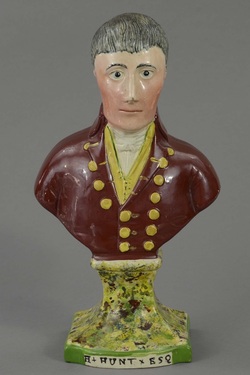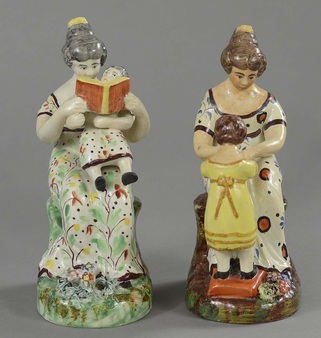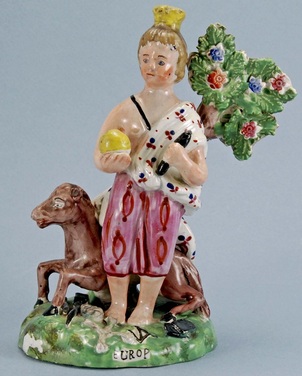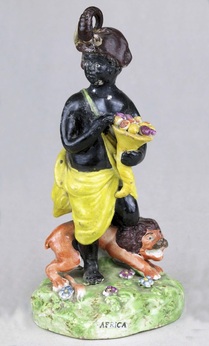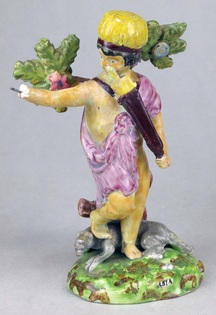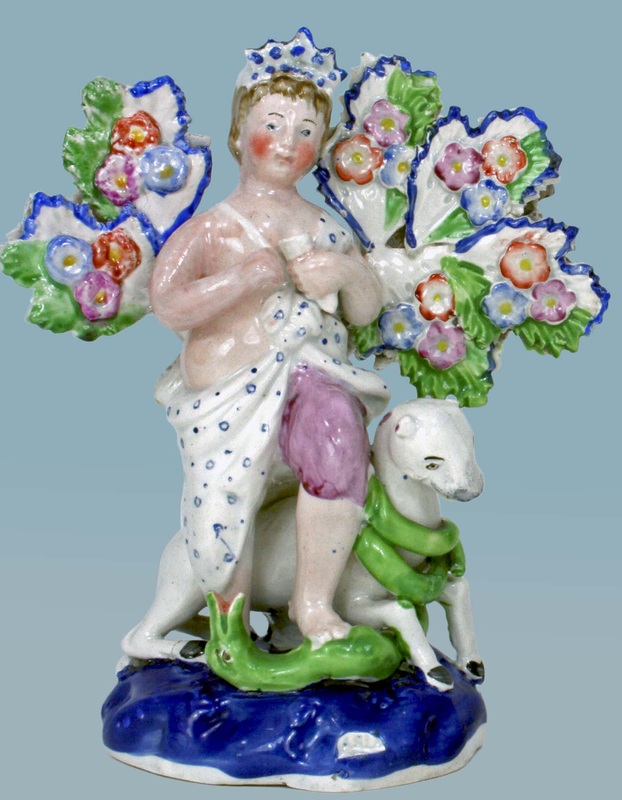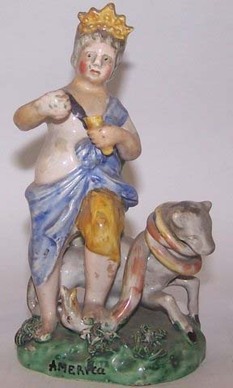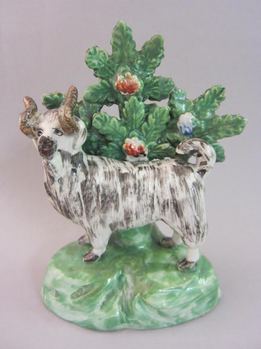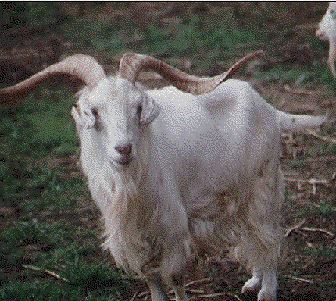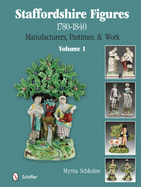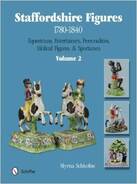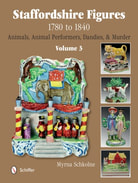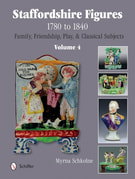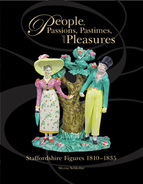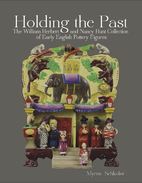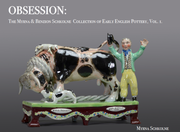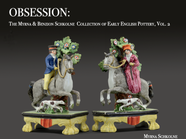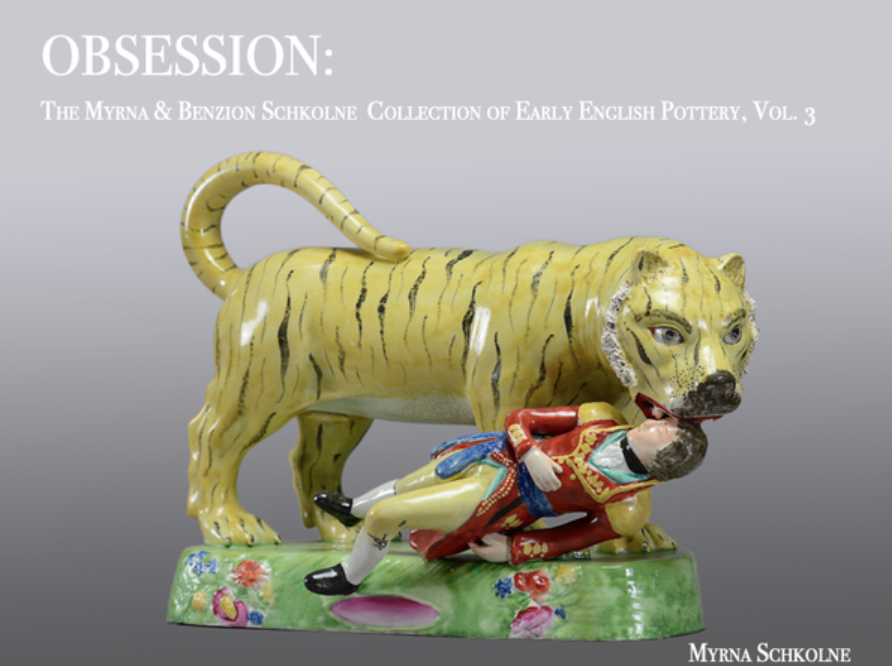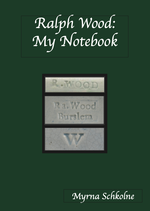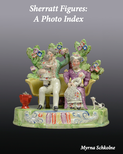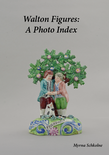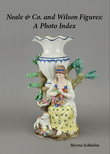When I first met Herbert and Nancy Hunt, I was struck by Herbert's intense curiosity, his determination to learn about the history reflected in his figures. But it doesn't stop there. Herbert believes that knowing the past is essential to understanding the present and the future--and so he loves figures whose tales span time. And the Hunt Collection abounds in figures that do just this.
|
This great variety is what makes the Hunt Collection a true Collection rather than an Exhibition. It checks all the boxes because it shows the whole gamut of figures produced before 1840. It is a privilege working with it, and I still get goosebumps handling the figures. If you want inspiration for your own collection, pick up a copy of "Holding the Past" and immerse yourself in the beauty of the figures and the amazing stories they tell. Nancy, on the other hand, loves the prettiness of her figures above all else. Her sharp eyes pick up the tiniest details, and she particularly loves religious figures and figures of sweet children. Together, Nancy and Herbert make a perfect collecting team--a "dream team." Because their collecting passion manifests itself in different ways, the Hunt Collection is extraordinarily broad, with plenty of both "ordinary" and extraordinary figures. From the perspective of a minimalist, collecting is a form of insanity. But from where I sit, those who think less is more...well, they just don't know what they are missing. By now, I have seen many early Staffordshire figure collections, and I often ask myself what it is all about. WHY do we collect as we do? Some of us collect only for prettiness, the sheer beauty of an early figure. Others find figures intrinsically or historically interesting, and their collections facilitate curiosity in one form or other. In fact, I think facilitating curiosity is one of the more logical reasons for collecting.
When I first met Herbert and Nancy Hunt, I was struck by Herbert's intense curiosity, his determination to learn about the history reflected in his figures. But it doesn't stop there. Herbert believes that knowing the past is essential to understanding the present and the future--and so he loves figures whose tales span time. And the Hunt Collection abounds in figures that do just this.
0 Comments
Last week, I found America, and for one moment, I knew how Christopher Columbus felt when he made his great discovery. Did I find the continent? No, rather I found a figure titled America. This figure has not been recorded hitherto, so I was thrilled to add it to my records. In the late eighteenth century, England's porcelain factories made sets of figures representing the four quarters of the globe. What did they know of six continents then? So Asia, America, Africa, and Europe, from the perspective of those times, represented our entire globe. Staffordshire potters, not to be outdone, also had a shot at making pearlware figures symbolic of the corners of the globe, but, for some unknown reason, just a handful of these figures survive. First, here is Europe. We have looked at this figure previously, and I have recorded only two examples of her. Then, there is Africa. I have again recorded two examples, and the one not shown here has white skin. And then there is Asia. Here I have been a little puzzled because I have recorded two very different figures titled Asia. I couldn't help thinking that one of them must be mistitled. So when the figure below of America appeared, looking just like Asia on the right, I concluded that Asia on the right should have been titled America. I am not quite satisfied with this solution though. The figure's attributes are a little muddled. It seems strange that America has a camel and Asia an alligator--it should be the other way around. So the puzzle is indeed unsolved...but then when Columbus discovered America, it was just a beginning for him too. Being a so-called Staffordshire "expert" is a humbling experience. I am constantly learning how little I know.
The figure titled America was at auction in the US this month, but my puritan tastes did not allow me to pursue it because of its condition. But it is so very interesting, and I hope someone has given it a loving home. If you want to see the handful of pearlware figures recorded to date, look at chapter 154 of Staffordshire Figures 1780-1840, Volume 4 I managed to live most of my life without seeing a real live goat, but about ten years ago I happened to go to a goat farm in Israel and I was smitten by the beauty of their stock. The goats were quite large, with silky coats and meltingly mournful eyes. Let's just say the stench is best forgotten! But, much as liked those goats, pearlware figures of goats, on the other hand, have left me underwhelmed. The animals are rather bony looking and boring, nothing like those sweet Israeli goats. But there is always an exception, and this past week, David Boyer and Ivan Mears listed the sweetest goat on their site...and promptly sold it. This little pearlware goat is unusual for several reasons. First, it is an unrecorded model. Second, the bocage is wonderfully intact--most goats have particularly blitzed bocages. Third, the horns curl upwards. Fourth, the goat has floppy ears. Floppy ears and upwardly curling horns are not something you see on any other pearlware goat. In fact, you don't see these on most live goats. The notable exception is the original cashmere goat. Yes, this little figure is indeed the very same goat responsible for softest cashmere yarn. By 1800, cashmere shawls had found their way to France and they were all the rage in Europe. France set about spinning the yarn, but importing raw cashmere from Tibet through Russia was an arduous undertaking, so a famous expedition set off to acquire France's own herd. Of the 1,500 animals rounded up, only 256 made it back to France in 1819. Farmers were really not into goats in those days--sheep and cattle were their focus--so there was no rush to establish this breed. But a few wealthy gentleman farmers experimented with the goats, and so it came about that an English gentleman by the name of C.T. Tower bought two female and two male goats for his farm in Essex. By 1828, his efforts had paid off, and the Society for the Encouragement of Arts, Manufactures, and Commerce awarded him a gold medal for successfully rearing a herd of cashmeres. Perhaps one of Mr. Tower's goats inspired the lovely little goat sold by Mears and Boyer.
I really enjoyed the Staffordshire Figure Association newsletter that arrived early today. The articles were good, and the Association has a lot going on. If you would like to join, visit staffordshirefigureassociation.com to learn how
|
Archives
February 2024
All material on this website is protected by copyright law. You may link to this site from your site, but please contact Myrna if you wish to reproduce any of this material elsewhere. |
